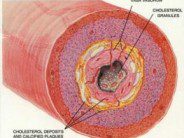 Tobacco smoking is a leading cause of morbidity and mortality, and causes heart disease, stroke, emphysema, chronic bronchitis, lung cancer and many other cancers. There are an estimated 5 million deaths per year throughout the world due to tobacco smoking. In the United States, one of every five deaths annually is caused by tobacco use. Tobacco use causes an estimated 443,000 deaths per year in the United States, and about 49,000 of these are the result of secondhand smoke exposure. Individuals who smoke tobacco will die on average about 13 to 14 years earlier than nonsmokers. We have previously discussed the comments made by the CEO of Phillip Morris International, Mr. Louis Camilleri, when he stated “Whilst [smoking] is addictive, it is not that hard to quit… There are more previous smokers in America today than current smokers.” We have also discussed the recent outdoors tobacco smoking ban that was instituted in New York City. Despite this, more needs to be done to rid the world of the scourge of tobacco smoking. In addition to the previously mentioned diseases, tobacco smoking has been implicated in the development of peripheral artery disease (PAD). PAD is an atherosclerotic disease that develops when the peripheral arteries, usually in the legs, become narrowed and obstruct the flow of blood. Symptoms of the disease include pain, weakness, numbness, or cramping in the legs due to decreased blood flow. Collectively, these symptoms are known as claudication, and can result in ulcer formation and ultimately leg amputation. A recent study published in the Annals of Internal Medicine provides even more evidence that tobacco smoking is harmful to the health of the smoker, and contributes to the development of PAD. The study was headed by Dr. Aruna Pradhan, an assistant professor of medicine at Harvard Medical School in Boston, Massachusetts and was funded by the National Heart, Lung, and Blood Institute and the National Cancer Institute. The investigation was designed as a prospective cohort study using the Women’s Health Study, which included healthy U.S. health care professionals aged 45 or older. The authors followed 39,825 women for a median of 12.7 years and assessed the association of current smoking status, cumulative smoking exposure, and smoking cessation with the incidence of symptomatic PAD. The women were placed into four categories: never smoked, former smoker, <15 cigarettes per day, and ≥15 cigarettes per day. There were 178 women diagnosed with PAD. Women who smoked 15 or more cigarettes per day were 10 times more likely to develop PAD than women who had never smoked. Former smokers had a decreased incidence of PAD. Despite the decreased incidence, former smokers still had an increased risk of developing PAD 20 years after quitting, compared to women who had never smoked. The authors concluded that “smoking is a potent risk factor for symptomatic PAD” and that “smoking cessation substantially reduces risk for PAD, but an increased occurrence of PAD persists even among former smokers who maintain abstinence”.
Tobacco smoking is a leading cause of morbidity and mortality, and causes heart disease, stroke, emphysema, chronic bronchitis, lung cancer and many other cancers. There are an estimated 5 million deaths per year throughout the world due to tobacco smoking. In the United States, one of every five deaths annually is caused by tobacco use. Tobacco use causes an estimated 443,000 deaths per year in the United States, and about 49,000 of these are the result of secondhand smoke exposure. Individuals who smoke tobacco will die on average about 13 to 14 years earlier than nonsmokers. We have previously discussed the comments made by the CEO of Phillip Morris International, Mr. Louis Camilleri, when he stated “Whilst [smoking] is addictive, it is not that hard to quit… There are more previous smokers in America today than current smokers.” We have also discussed the recent outdoors tobacco smoking ban that was instituted in New York City. Despite this, more needs to be done to rid the world of the scourge of tobacco smoking. In addition to the previously mentioned diseases, tobacco smoking has been implicated in the development of peripheral artery disease (PAD). PAD is an atherosclerotic disease that develops when the peripheral arteries, usually in the legs, become narrowed and obstruct the flow of blood. Symptoms of the disease include pain, weakness, numbness, or cramping in the legs due to decreased blood flow. Collectively, these symptoms are known as claudication, and can result in ulcer formation and ultimately leg amputation. A recent study published in the Annals of Internal Medicine provides even more evidence that tobacco smoking is harmful to the health of the smoker, and contributes to the development of PAD. The study was headed by Dr. Aruna Pradhan, an assistant professor of medicine at Harvard Medical School in Boston, Massachusetts and was funded by the National Heart, Lung, and Blood Institute and the National Cancer Institute. The investigation was designed as a prospective cohort study using the Women’s Health Study, which included healthy U.S. health care professionals aged 45 or older. The authors followed 39,825 women for a median of 12.7 years and assessed the association of current smoking status, cumulative smoking exposure, and smoking cessation with the incidence of symptomatic PAD. The women were placed into four categories: never smoked, former smoker, <15 cigarettes per day, and ≥15 cigarettes per day. There were 178 women diagnosed with PAD. Women who smoked 15 or more cigarettes per day were 10 times more likely to develop PAD than women who had never smoked. Former smokers had a decreased incidence of PAD. Despite the decreased incidence, former smokers still had an increased risk of developing PAD 20 years after quitting, compared to women who had never smoked. The authors concluded that “smoking is a potent risk factor for symptomatic PAD” and that “smoking cessation substantially reduces risk for PAD, but an increased occurrence of PAD persists even among former smokers who maintain abstinence”.
Reference:
David Conen et. al. “Smoking, Smoking Status, and Risk for Symptomatic Peripheral Artery Disease in Women: A Cohort Study” Ann Intern Med June 6, 2011 154:719-726










 DrSamGirgis.com is a blog about medicine, nutrition, health, wellness, and breaking medical news. At DrSamGirgis.com, the goal is to provide a forum for discussion on health and wellness topics and to provide the latest medical research findings and breaking medical news commentary.
DrSamGirgis.com is a blog about medicine, nutrition, health, wellness, and breaking medical news. At DrSamGirgis.com, the goal is to provide a forum for discussion on health and wellness topics and to provide the latest medical research findings and breaking medical news commentary.
{ 0 comments… add one now }